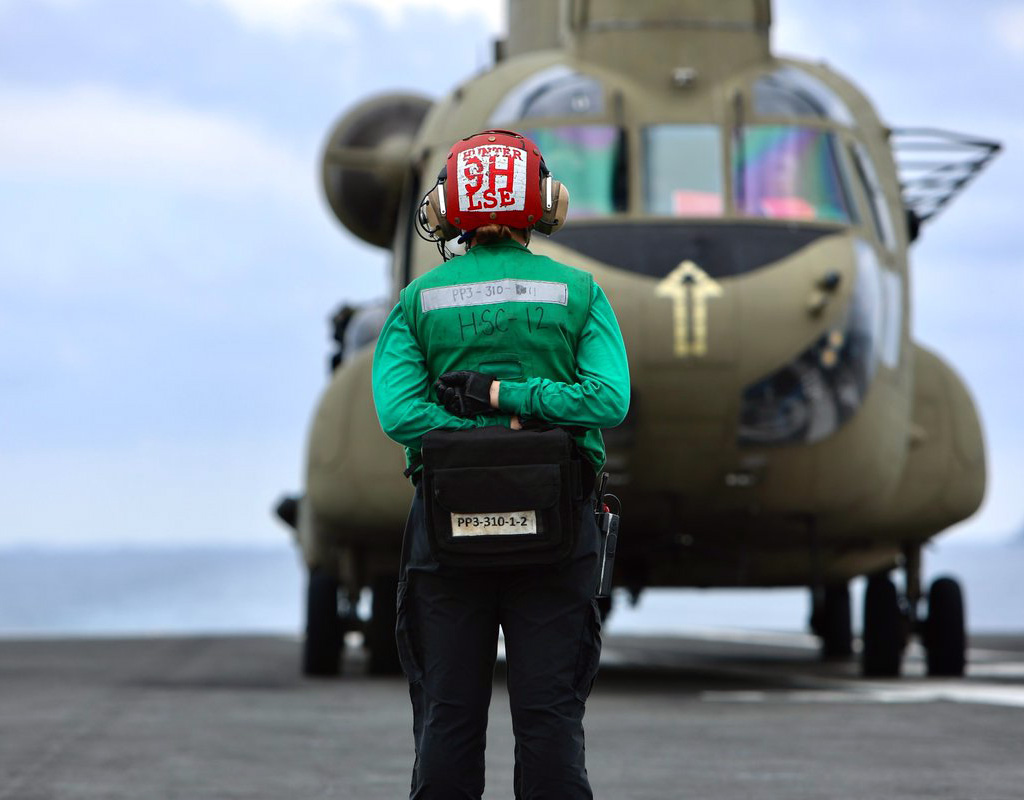
The cold cool wind rushed through the fuselage of the helicopter as an air crew member opened the side cabin door to call out landing commands as the helicopter quickly landed on the USS Ronald Reagan (CVN 76).
Soldiers from B Company, 3-2 General Support Aviation Battalion, 2nd Combat Aviation Brigade conducted deck landings with CH-47F Chinook helicopters on the the U.S. Navy’s only forward-deployed aircraft carrier, USS Ronald Reagan (CVN 76), in the East Sea on September 26, 2022.
“This was our companies and many crew members, initial deck landing qualifications in their flying career,” said Capt. Elias Shiheiber, Commander of B Company, 3-2 General Support Aviation Battalion. “We had tremendous support from our higher command to coordinate and provide subject matter expert trainers from B Company 3rd Battalion, 25th Aviation Regiment stationed in Hawaii to assist in re-establishing the ‘Innkeepers’ deck landing currency.”
Deck landing qualifications are conducted to certify air crew members and pilots on landing on a ship. This training was conducted in part with the Maritime Counter Special Operations Exercise (MCSOFEX) to strengthen interoperability with our joint partners.
“When landing on a ship, visual illusions play a big role in the approach to final landing and are most pronounced when departing the ship” said Shiheiber. “The ship moves forward at about five to 25 knots. While on approach, the pilot must maintain a progressive deceleration to match the speed of the ship. The pilot cannot rely on their airspeed indications. They must rely on visual cues and the ships landing signalmen standing on the ships landing pad to direct the aircraft in.”

Landing on a moving target is not the only part of the operation that is different. The planning and coordination required is as well.
“The aircrew must conduct a ‘pre-sail’ checklist with the ship. Key points of discussion include identifying crews communications, confirming landing areas and the location of the ship,” said Shiheiber.
Prior to this training event, the USS Ronald Reagan (CVN 76) has not been in South Korean waters since 2018.
“All the hard work pays off when you are short of the final landing area and hear the tower clear the aircraft to the landing pad,” said Shiheiber. “The aircraft comes to a slow forward airspeed over the pad and then called clear down left and right by the air crew members, allowing the aircraft to touchdown rapidly. After contact is made with the landing pad, the crew can look to the left and right of them and see they are moving forward with the ship at sea.”
This story was prepared and distributed by 2nd Combat Aviation Brigade.

